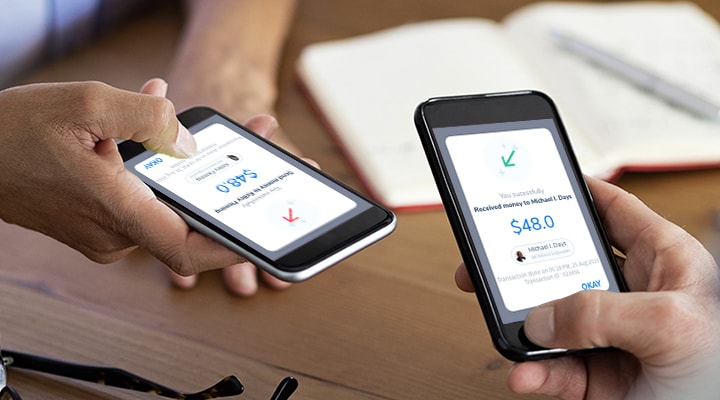
By alphacardprocess December 10, 2021
Peer-to-peer payments are just what they sound like, payments that are sent directly from one person to another. The transferring of money happens without the use of a traditional financial institution or third party processor such as PayPal. Instead, peer-to-peer payment apps run on technology built around decentralized cryptocurrency networks including Bitcoin . This means that peer-to-peer payments are processed on the back end by computers all over the world that are linked to the specific network. Because of this technology, peer-to-peer payment transaction fees are considerably less than what is charged for credit card payments or even services like PayPal.
Peer-to-peer payment apps work kind of like social media networks in that they allow users to connect with friends and family members in order to easily send and receive payments. The apps also tend to have built-in features that make it easy to keep track of your transactions. For example, most peer-to-peer payment apps will create a history of your payments which can be accessed at any time. This can be helpful for keeping track of what you’ve paid for and when.
How do I start using a peer-to-peer payment app?
The first step is to decide which app you want to use. There are a number of different apps available, so it’s important to do your research in order to find the one that is right for you. Once you’ve selected an app, the next step is to create an account. This process is usually pretty simple and will require you to provide some basic information such as your name and email address.
After your account is set up, the next step is to add your payment information. This includes things like your credit or debit card number, checking account information, etc. To send peer-to-peer payments through an app, you will also need to know the email address or phone number of the person you are sending money to.
What are the benefits of using a peer-to-peer payment app?
While traditional financial institutions have been around for many years, they are often not the most convenient option when it comes to making small payments. This is especially true if you’re trying to send money to someone who doesn’t have an account with that institution. Peer-to-peer payment apps offer a convenient and affordable solution for these types of transactions.
Another benefit of using a peer-to-peer payment app is that you can often avoid paying transaction fees. This is especially true if you are sending money to someone in another country. Peer-to-peer payment apps make it easy to send and receive payments from anywhere in the world.
What are the risks associated with using a peer-to-peer payment app?
While the peer-to-peer payment apps that are available today are designed to be convenient and affordable, you will need to weigh the benefits against the potential risks before making a decision. With that in mind, here are some of the most important things any consumer should consider:
- Security – Since peer-to-peer payment apps function like social networks, there is always the risk that your account could be hacked. For this reason, many peer-to-peer payment apps use two-factor authentication in order to get around this problem.
- Privacy – With social networks like Facebook, all of your posts are essentially public by default. This means that other users can see your profile, photos and any other information that you share. With peer-to-peer payment apps, it’s important to remember that these transactions are essentially private by default. This means that app users’ payment information is not always available for others to see.
- Fees – While traditional financial institutions often charge higher transaction fees for peer-to-peer payments, many of the newer peer-to-peer payment apps do not. This can be a major benefit for consumers who frequently make small payments.
- Support – Not all peer-to-peer payment apps are created equal. If you’re having trouble using one app, it’s important to check the support options before switching to another.
- Personal access – When you use traditional financial institutions for peer-to-peer payment, you can often rely on an automated phone system or website that makes it easy to complete your transaction. With peer-to-peer payment apps, you will need to give the person sending money your personal information like your email address or phone number. This can be a risk if you’re not completely confident that the other person is trustworthy.
The bottom line
Peer-to-peer payment apps offer a convenient and affordable way to send and receive payments from anywhere in the world. Before deciding whether or not to use one of these apps, it’s important to take a closer look at the security, privacy and fees associated with each. In addition, it’s also a good idea to learn as much as you can about customer support options before making a final decision.
